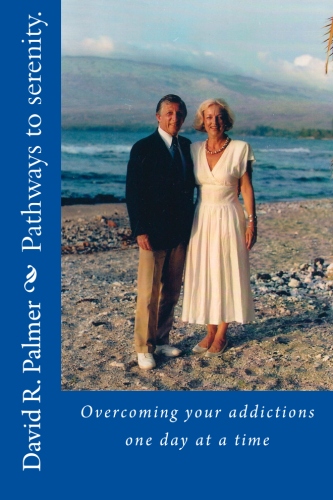By David Palmer
Shortly before noon on a sunlit day in May, men and women began gathering at the “Recovery in the Daylight” Narcotics Anonymous  (NA) 12-Step meeting at Recovery Central, a new Little Rock facility mainly for NA meetings.
(NA) 12-Step meeting at Recovery Central, a new Little Rock facility mainly for NA meetings.
More about the “Recovery in the Daylight” meeting in a minute. First, some background on Narcotics Anonymous and on Recovery Central.
NA meetings came along about 18 years after AA’s founding in 1935 and are similar to AA’s 12-Step meetings in almost every respect. There is one important difference, and that is that AA focuses strictly on alcohol addiction while NA is open to all drug addictions including alcohol.
Today, NA, like AA, is a worldwide fellowship. NA has more than 50,000 weekly meetings in 130 countries and is a vital option for those seeking recovery. Like AA, it also has its own literature including the book “Narcotics Anonymous” and “Just for Today,” a book of daily meditations.
In this issue of One Day at a Time (page 19 though 22) there are 70 NA meetings listed in the Little Rock area, 178 AA meetings and 56 Al-Anon meetings (for family members and others affected by the addict’s behaviors). There are also 30 Cocaine Anonymous (CA) meetings listed which feature a slightly different recovery program.
All of these meetings are free to all who seek sobriety, and are sustained only by the voluntary contributions of those who attend. Meetings are a tremendous resource. Over the years they have helped millions recover from their addictions, something that is not widely known because of the anonymity issue.
The new Recovery Central facility at 2701 West Seventh Street is owned by the non-profit Friends of Recovery Foundation, Inc. (F.O.R). Tom Barron is chairman of the board. The facility hosts 20 NA meetings a week, including seven home groups with more meetings expected.
Recovery Central opened in a North Little Rock church in 1992. Lisa House, who has been a voting member since the beginning and was an incorporating member in 1992, recalls that it all began when she and several others sat down at a picnic table and began to put numbers to their dreams.
“We thought we might do something like Wolfe Street,” House said, “and talked to Gene Walters (one of Wolfe Street’s founders) about how to proceed, and he was very helpful.”
As a place for meetings, Recovery Central is in concept very much like Wolfe Street, a popular facility on 12th street near Children’s Hospital. It was founded in 1982 by Joe McQuany and others to provide meeting rooms for recovering alcoholics and Al-Anons.
Where the two facilities differ is that the Wolfe Street AA meetings focus exclusively on alcohol-related problems (talk of other drugs during meetings is discouraged), whereas Recovery Central opens its rooms to addictions of all kinds. It also makes its rooms available for other purposes and has in the past even provided rooms for a wedding and baby showers.
Recovery Central and Wolfe Street may differ in some respects, but they are the same in that they both offer opportunities for those struggling with addictions to get well.
Commenting on the new Recovery Central facility, Sandy Sanders, one of the founders, said, “ownership will ultimately be more cost effective than renting. In 2009 it cost more than $26,000 in rental costs to keep the doors of Recovery Central open. Any cost savings will benefit the fellowship at the local, national and international level.”
F.O.R has no paid staff and relies solely on volunteers to maintain and manage the property. Funding for the foundation is obtained from monthly dues of foundation members, charitable donations, and various fundraising activities. F.O.R. has two annual fundraisers, a golf tournament in June and a steak dinner, auction and dance, typically held in November.
They tried a basketball tournament one year pitting “the medium height middle-aged white guys” of NA against “the tall, young black guys” representing CA who beat them so badly the basketball idea was dropped.
So what’s an NA meeting like? Let’s get back to those individuals attending the “Recovery in the Daylight” noon meeting.
They were a mix of men and women, married and single, blue collar, white collar, newcomers and old-timers. The chairman went through the standard script on the purpose of the meeting, announcements and housekeeping details and prayer before opening it up for discussion.
The testimonies, volunteered by perhaps a dozen during the course of the hour-long meeting, revealed varying degrees of satisfaction with how things were going.
One attractive woman said, “I’ve got three years of sobriety, and, with Memorial Day coming, I feel resentful that I can’t do my thing — overusing, overeating, overspending.
“I need to have some joy in my life for relief. The last time I felt this way, I got a divorce.
“Look, I’m just stewing because I can’t play around anymore. I just hope my higher power cares about me.”
When she finished getting things off her chest, she laughed and said, “I’m only 50. I’m just copping a resentment.”
Sympathetic murmurs from the crowd of “we love you” followed, and near the end of the meeting she went around the room and with a big smile hugged half a dozen people.
A Vietnam War combat veteran with nine years of sobriety and a sponsor to more than a dozen men said, “Anger for so long was my favorite emotion. Now I have no trouble making a long gratitude list. I never knew I could experience a love like this. And every day, I get a little better at it. I love you all. You’ve given me a reason to live.”
Another man who had been in and out of clean time said, “This is a matter of life and death for me. The consequences of my actions really kicked my butt. I had to stop just acting on my feelings. It’s my job to recover and not my sponsor’s or anybody else’s. My program is pray and don’t put drugs in your body.”
In addition to the “Recovery in the Daylight” meeting, Recovery Central offers “Together We Can,” “Clean and Serene,” “Clean at Sunrise,” “How and Why,” “Keep it Simple” and “Regardless of Age.” The oldest NA meeting in Little Rock is “Saturday Night Live” at St. James United Methodist Church.
Several years ago, NA did a survey of about 13,500 of its meeting attendees and found that alcohol was actually the most often used drug—as reported by 89 percent of those responding—but close behind are cannabis (marijuana) used by 81 percent and cocaine used by 73 percent.
Of all the respondents, 48 percent said they used hallucinogens, 45 percent said opiates, 44 percent said crack, 44 percent said prescription drugs, 20 percent said inhalants and 17 percent said meth. Almost all respondents named more than one drug.
The findings provided other information about NA attendees:
• the average age of an NA attendee is 42.8 years.
• members surveyed attend an average of 4.2 meetings a week.
• most are employed, many of them in white collar jobs and the racial mix conforms to national averages
• one third are involved in other 12- Step programs
The thing that really stood out was that 90 percent said family relationships had improved as a result of membership in NA.
And so it is with NA in which “lost dreams awaken, and new possibilities arise,” which is a quote above is from “Just for Today — Daily Meditations for Recovering Addicts.”



